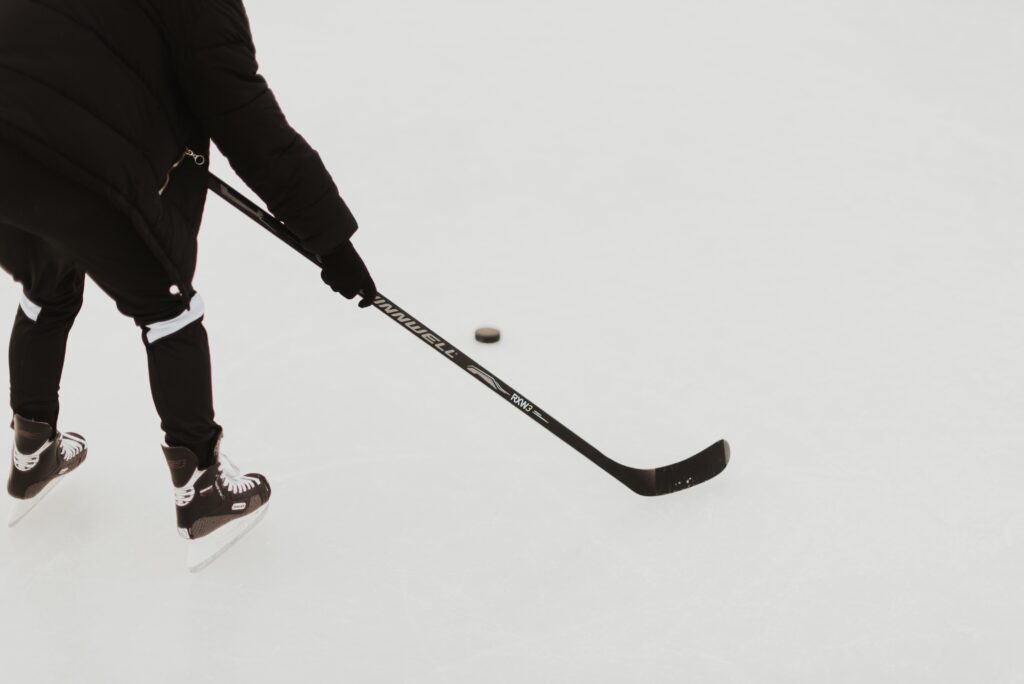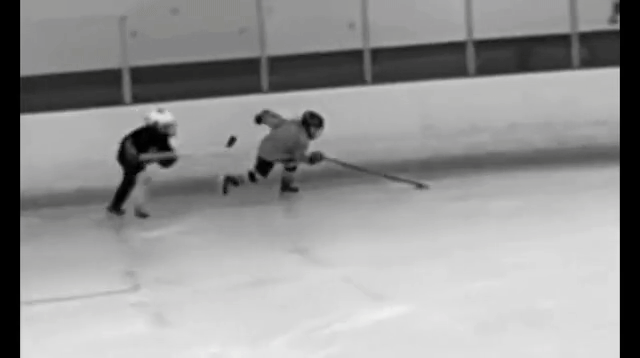Developing Team Play in Young Hockey Players

Long time hockey friends know I love fielding questions — because trying to solve them tends to make me really think, and to perhaps even become better at what I do.
However, as I joked to the coach who sent me the most recent one, he didn’t have to start with such a toughie. Yup, developing team play in young hockey players can be a slow and tricky process…
Now, before I really get going, members should know that I could have named this piece quite a bit differently, or I could have just pointed that coach towards an article (or two or three) I’ve done before — all of them having to do with “dealing with the puck hog”. That said, here’s the gist of that coach’s question…
“I have a young group of kids I’m working with. I have one child who is competitive and individually talented. Certainly the best skills player on the team. But he doesn’t play a team game, I’m trying to figure out how to teach him to trust his teammates, pass the puck and spread out. I have them performing a basic breakout and he is fine implementing it in practice but as soon as we get into the game he forgets everything…”
The coach went on quite a bit from there, ending with, “Do you have any drill ideas which will help to teach the whole team to pass more?”

Of course, I could have referenced the “puck hog” thing and been done with this one. But something in the above told me this post should really be more about developing team play in young hockey players.
Okay, so here are a couple of fleeting thoughts that came to mind as I read (and reread) the coach’s situation…
Up front, a youngster as he’s described is almost always “the best skills player on the team”. And, as such, he’s likely the model — at least skills-wise — for most other kids that age. Did you catch what I just said? He’s most likely the model, and most of the problems have to do with the shortcomings of other kids.
Carrying that a bit farther, I really like it that the coach sounds like he’s understanding, and only looking for the best way to help all involved. (I know some coaches would demonize such a youngster, and make him miserable for doing some things that will be pretty desirable a few years down the road.)
One other thing I bring up often in these kinds of discussions… We all have to wonder what a young Wayne Gretzky went through in his earliest years. I mean, the eventual Great One racked up hundreds of goals in his earliest years, yet it seems no one along the way destroyed his confidence, or punished him for being better than others. I have seen kids beaten on mercilessly in my many years in the game, with some of them turned off to a sport they previously loved, this most often due to a coach’s or the team parents’ jealousies.

Okay, I had to get that out of the way, because that “puck hog” thing was probably the first thought that came to mind for many of my readers, too. I think I’d much prefer, though, to frame this as a matter of developing team play in young hockey players — and I do mean in all of this coach’s players…
As an aside, I wish now that I was able to talk with that coach tonight. I’d ask him what he thought of the latter statement — about it possibly being a team problem, more than just an individual one. I mean, while we all know his young hot-shot feels the need to do it all himself in the heat of battle, I wonder how many teammates are able to actually keep up under such conditions. I know from my observations, teammates at the younger levels tend to stand back and watch as their puckhandling mate takes off. (This should sound familiar, if you read my recent post on “offensive support”.)
I can almost guarantee that’s what is happening with the team in question — in that others on the ice tend to stand back and watch their puckhandling mate do his thing.
Actually, I’m hoping that team’s coach is nodding to the affirmative if he’s reading this.

Then, let me repeat some of the above a little more clearly…
For, I believe the real problem — or maybe the course that will best handle the coach’s concerns — calls for raising the skill level (and confidence?) of all players, so that most of them can actually engage in better team play.
If that coach has access to my piece on offensive support, I think he ought to make sure that all players are getting open for their puckcarrying teammate. After all, then — and only then — is it possible to criticize the “puck hog” for not passing the puck.
I would make 1 on 1 and especially 2 on 1 games of keepaway a staple for every practice. That, to me, is one way of getting kids to see the value of passing the puck and getting open when under pressure. Hey, stickhandling drills are nice, but nothing helps the kids put those skills to game-like use better than short (maybe 10-second long) bouts of keepaway. Regular 2 versus 1 keepaway is a lot like the little guys’ game is played, and I think it’s a lot like what the coach is looking for in his players. (I hope the coach and my readers are thinking along with me on this one, too, in that such competitions bring out what the coach is likely hoping for in his star player. In other words, his little puckhandler will be forced to continuously look for an open teammate in these competitions, and even learn that his mate is likely to give him the puck back in a few seconds.)
Next, though, I think the coach has to concentrate more on his less skilled players in practices, by especially teaching them to stay moving and to keep trying to get open.
For sure, lots of skating and puckhandling work will bring the rest of his roster closer and closer to their star teammate. And my guess is that many of his less skilled players could also use the very methodical help I provide in my video on “Passing Basics in Hockey”.
Although I’m not exactly sure where the coach’s young 7- and 8-year old kids are, I’ve held “timed attack plays” to encourage teamwork among my players. With young kids, I wouldn’t have them skate too far between thrusts — so maybe I’d start the drill about 20′ from a goal. In other words, a coach can have a ton of pucks collected at a spot out there, with two (or three) lines of attackers behind him. A group of attackers would have something like 30-seconds to score as many goals as possible (against rotating goalies). In other words, a trio might take off, score a goal as soon as they can, then return to the starting point for another puck, etc. The hitch: each player must handle the puck a given number of times (once each?) in order for a goal to count. Coaches of older teams might like to know that I’ve used this competition on the night before a game — having older guys start and return to the near blue line, with the 3-man forward unit scoring the most goals getting to start the next game. I knew that wasn’t such a big deal to me, but my players went nuts trying to win — as a unit.

I hope you watched the above video and noticed something. I mean, what’s the chance some people in the arena — and especially a certain set of parents — were upset that #47 never passed to #59? It didn’t take me too many viewings, though, to realize there was hardly ever a chance for that pass to happen, UNLESS the objective was to not score. Ya, #59 trailed the play the entire time, and never attempted to get open for his puckhandling teammate. Actually, the kid even had his stick down as if ready for a pass, but I can’t imagine how a pass could ever be sent towards his location.
Finally, I really like the coach who sent me the question — even long distance, just from the way he rather compassionately phrased things. My only hope is that he and others don’t think I’ve designed an overly simplistic approach to his problem without good reason. I truly believe the solution I’ve outlined is the right approach for young ones, or the best way to help both sides of his team’s problem. For sure, Rome wasn’t built in a day, and my approach might not bring immediate results. Still, I’m always looking for more input here, and welcome member comments down below.